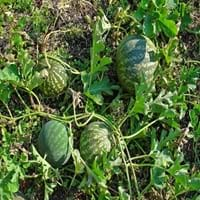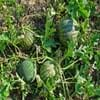Life Span
Annual
Perennial
Origin
Hybrid origin, Africa, Southern Africa
Hybrid origin
Types
Not Available
Victoria Rhubarb
Colorado Red Rhubarb
Turkish Rhubarb
Number of Varieties
Not Available
Habitat
along watercourse, Grassland
gardens, Grassland, Humid climates, Tropical regions, Urban areas
USDA Hardiness Zone
10-12
5-8
Sunset Zone
A3, H1, H2, 1a, 1b, 2a, 2b, 3a, 3b, 4, 5, 6, 7, 8, 9, 10, 11, 12, 13, 14, 15, 16, 17, 18, 19, 20, 21, 22, 23, 24
2b, 3a, 3b, 4, 5, 6, 7, 14, 15, 16, 17
Habit
Prostrate/Trailing
Clump-Forming
Flower Color
Yellow
Light Pink
Flower Color Modifier
Bicolor
Not Available
Fruit Color
Green, Crimson, Dark Green
Burgundy
Leaf Color in Spring
Light Green
Green, Dark Red
Leaf Color in Summer
Green, Gray Green
Green, Dark Red
Leaf Color in Fall
Green, Gray Green
Green, Dark Red
Leaf Color in Winter
Not Available
Light Green
Leaf Shape
Irregular
Compound
Plant Season
Summer, Fall
Spring, Summer, Fall
Sunlight
Full Sun
Full Sun, Partial Sun
Growth Rate
Very Fast
Medium
Type of Soil
Loam
Clay, Loam
The pH of Soil
Neutral
Acidic, Neutral, Alkaline
Soil Drainage
Well drained
Average
Bloom Time
Indeterminate
Summer, Late Summer
Tolerances
Drought
Drought
Where to Plant?
Container, Ground
Ground
How to Plant?
Seedlings, Transplanting
Stem Planting
Plant Maintenance
High
Medium
Watering Requirements
Requires consistently moist soil, Requires regular watering, Requires watering in the growing season, Water Deeply
Do Not over Water, Requires regular watering, Use Mulches to help prevent water loss during hot and windy weather, Water Deeply
In Summer
Lots of watering
Lots of watering
In Spring
Moderate
Moderate
In Winter
Average Water
Average Water
Soil pH
Neutral
Acidic, Neutral, Alkaline
Soil Type
Loam
Clay, Loam
Soil Drainage Capacity
Well drained
Average
Sun Exposure
Full Sun
Full Sun, Partial Sun
Pruning
Remove damaged leaves, Remove dead leaves, Remove dead or diseased plant parts
Remove damaged leaves, Remove dead branches, Remove dead leaves
Fertilizers
fertilize in growing season, Nitrogen, Potassium
All-Purpose Liquid Fertilizer
Pests and Diseases
brown-spot needle blight, Cutworms, Downy mildew, Flea beetle, Flea Beetles, Fungal Diseases, fungus, Fusarium wilt, Powdery mildew, Red blotch
Red blotch
Plant Tolerance
Drought, Salt
Drought
Flower Petal Number
Single
Not Available
Foliage Texture
Coarse
Coarse
Foliage Sheen
Matte
Glossy
Attracts
Bees, Insects, Squirrels
Not Available
Allergy
Stomach pain, Throat itching
Skin irritation
Aesthetic Uses
Ground Cover
Showy Purposes
Beauty Benefits
Not Available
Not Available
Environmental Uses
Air purification, Food for animals, Food for birds, Food for insects, Versatility
Air purification
Medicinal Uses
High blood pressure, Nutrients
Not Available
Part of Plant Used
Fruits
Whole plant
Other Uses
Used As Food, Used for its medicinal properties, Used in making beverages
Culinary use, Used as Ornamental plant
Used As Indoor Plant
No
No
Used As Outdoor Plant
Yes
Yes
Garden Design
Edible, Fruit / Fruit Tree, Herb / Vegetable, Tropical, Vine
Feature Plant, Mixed Border
Botanical Name
CITRULLUS lanatus 'Crimson Sweet'
RHEUM 'Ace of Hearts'
Common Name
Crimson Sweet Watermelon, Watermelon
Ace of Hearts Ornamental Rhubarb, Ornamental Rhubarb
In Hindi
तरबूज़
सजावटी प्रकार का फल
In German
Wassermelone
Ornamental Rhabarber
In French
Citrullus lanatus
rhubarbe ornementale
In Spanish
Citrullus lanatus
Ornamental de ruibarbo
In Greek
καρπούζι
καλλωπιστικά Ραβέντι
In Portuguese
Citrullus lanatus
ornamental ruibarbo
In Polish
Citrullus lanatus
ozdobne Rabarbar
In Latin
Citrullus lanatus
decentius Rhubarb
Phylum
Embryophyta
Tracheophyta
Class
Magnoliopsida
Not Available
Order
Cucurbitales
Caryophyllales
Family
Cucurbitaceae
Polygonaceae
Clade
Angiosperms, Eudicots, Rosids
Angiosperms, Core eudicots, Eudicots
Tribe
Benincaseae
Not Available
Subfamily
Cucurbitoideae
Not Available
Number of Species
Not Available
Importance of Citrullus Lanatus and Ornamental Rhubarb
Want to have the most appropriate plant for your garden? You might want to know the importance of Citrullus Lanatus and Ornamental Rhubarb. Basically, these two plants vary in many aspects. Compare Citrullus Lanatus and Ornamental Rhubarb as they differ in many characteristics such as their life, care, benefits, facts, etc. Every gardener must at least have the slightest clue about the plants he wants to plant in his garden. Compare their benefits, which differ in many ways like facts and uses. The medicinal use of Citrullus Lanatus is High blood pressure and Nutrients whereas of Ornamental Rhubarb is Not Available. Citrullus Lanatus has beauty benefits as follows: Not Available while Ornamental Rhubarb has beauty benefits as follows: Not Available.
Compare Facts of Citrullus Lanatus vs Ornamental Rhubarb
How to choose the best garden plant for your garden depending upon its facts? Here garden plant comparison will help you to solve this query. Compare the facts of Citrullus Lanatus vs Ornamental Rhubarb and know which one to choose. As garden plants have benefits and other uses, allergy is also a major drawback of plants for some people. Allergic reactions of Citrullus Lanatus are Stomach pain and Throat itching whereas of Ornamental Rhubarb have Skin irritation respectively. Having a fruit bearing plant in your garden can be a plus point of your garden. Citrullus Lanatus has showy fruits and Ornamental Rhubarb has showy fruits. Also Citrullus Lanatus is not flowering and Ornamental Rhubarb is not flowering . You can compare Citrullus Lanatus and Ornamental Rhubarb facts and facts of other plants too.





